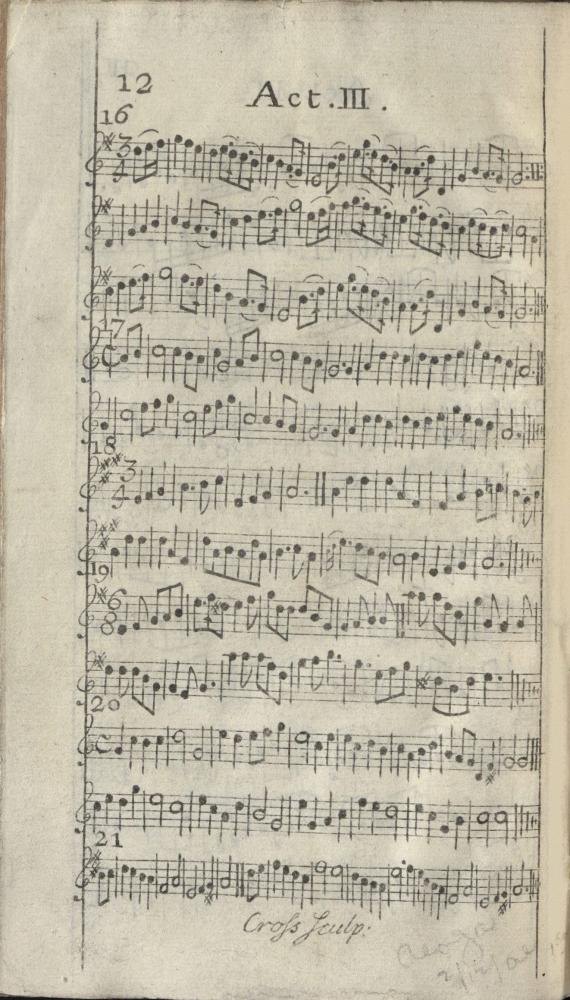Eibhlin Aruin / Ellen A Roon
| TYPE | 3 - Complex Melody |
| TOPIC | Love |
| TUNE STRUCTURE | A8 B13 |
| VERSE STRUCTURE | 3v 4l + ch |
| TIME SIGNATURE | 34 |
| KEY SIGNATURE | ♯ |
| TONAL CENTRE | G |
| INCIPIT | GGABC'D'E'GABCGA |
| GENRE | Ballad |
| TEXT SOURCE | 'Ducatu non vanna. Aileen aroon. A Irish Ballad sung by Mrs Clive' ([London, c.1740] British Library Houghton Library, Harvard G.307.(149) |
| TUNE SOURCE | Charles Coffey, The Beggar's Wedding (London, 1729; 3rd ed.), No.18 |
| FIRST LINE | Duca tu non vanna tu |
| NOTATED INCIPIT | |
| The Beggar’s Wedding was first performed in Dublin in December 1728. The first printing of its tunes came in the 3rd London edition, reproduced here. Modern scholarship attributes the poem to the early eighteenth-century Clare poet Cearbhaill Ó Dálaigh. Joseph Cooper Walker and Grattan Flood both made the poet a much older figure. Kitty Clive’s first performance of this song was in Dublin in 1741. It later became closely associated with her repertoire and was frequently performed and referred to throughout the eighteenth and nineteenth centuries. Nollaig Casey-McGlynn has observed that Ellen a Roon ‘is one of the few Irish tunes which successfully spanned three Irish music genres: that of the aristocratic courtly harp tradition, the Anglo-Irish tradition, and the folksong and folk music tradition’ (MA diss, QUB 2011, p.4). | |
Ailen aroon an Irish Ballad sung by Mrs Clive at the theater royalDucatu non Vannu tu aileen aroon.San Ducatu non Vanna tu aileen aroon.Ducatu non Vannu tuDucatu non Vanna tu Duca tu Ducat u Duca tu non Vanna tuO Ducatu non Vanna tu aileen aroon.Kead mille Faltie rote aileen aroon.Kead mille, Faltie rote aileen aroon.Kead mille Faltie rote shaetmille Faltie rote oetmille nee mille deh mille Faltie rote.O Faltie gus fine rote aileen aroon.Tuca me sni anna me sgra ma chree sniO tuca me sni anna me sgra ma chreeTuca me sni anna me tuca me sni anna metuca me tuca me tuca me sni anna meO Tuca me sni anna me sgra me chree stu.


 Aileen aroon sung by Mrs Clive [THIS].jpg)